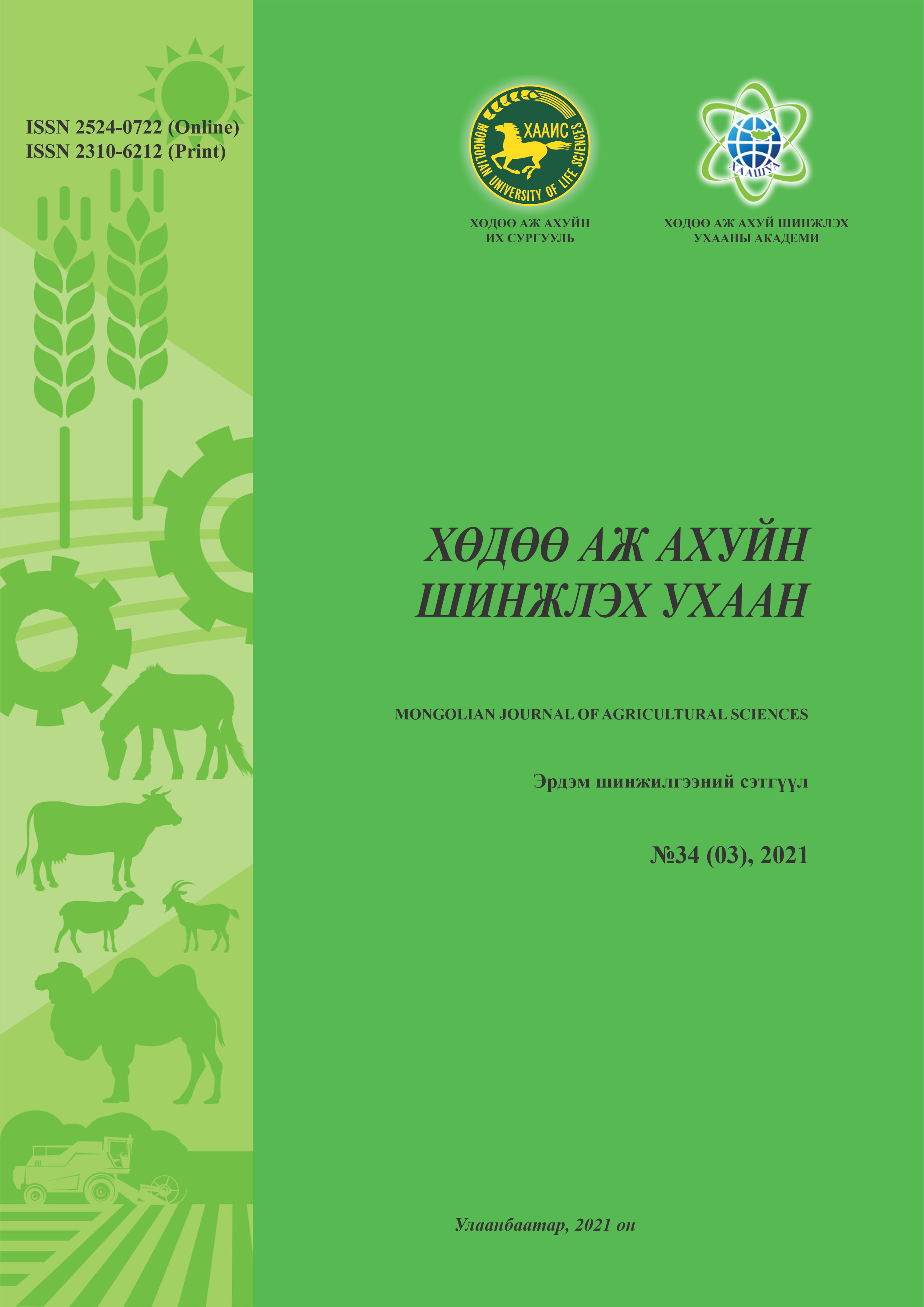Private cost-benefit analysis of herder household mobility in Mongolia
DOI:
https://doi.org/10.5564/mjas.v34i3.1921Keywords:
Herder mobility, cost of mobility, benefit of mobility, cost-benefit analysisAbstract
Many researchers argued that mobility is the most optimal strategy for extensive animal husbandry, as it helps fatten the animal and gives the grassland opportunity to recover. However, there is an extremely limited number of research estimating those benefits brought by herders’ mobility. This research focuses on the mobility costs and benefits of 288 herder households from 11 soums in central and eastern part of Mongolia including Tuv, Khentii, Sukhbaatar and Dornod provinces. The primary data was collected from herders for MORESTEP project. In order to calculate the benefits of the mobility, 3 positive effects such as livestock weight benefit, milk benefit, the amount of hay saved were included. The positive effects of mobility were modeled using the multiple linear regression method. Due to the fact that the main independent variable “mobility” can be measured by both distance and frequency, the research employed 2 different models (Frequency of mobility and Distance of mobility). The result of the 2 models differed considerably as the net benefit per sheep unit was 4,334.6₮ (using the number of mobility as an independent variable), or 3,017.3₮ (using the distance of mobility as an independent variable). Mobility total benefit started decreasing after households moved more than 4 times a year. On the other hand, the farther the households moved the more they benefited. Geographically, households from Bayantsagaan soum of Tuv province had the highest net benefit of mobility for each sheep unit, while the herders from Erdenetsagaan soum of Sukhbaatar province had the lowest.
Малчдын нүүдлийн хувийн зардал-өгөөжийн шинжилгээ
Ихэнх судлаачид нүүдэл ихээр хийх нь олон талын ач холбогдолтой хэмээн үздэг. Учир нь бэлчээр сэлгэлт хийснээр малын тарга, тэвээрэг сайжирч, бэлчээрийн ургамал нөхөн сэргэх боломжийг бүрдүүлдэг. Гэтэл нүүдлийн зардал, түүнээс хүртэх өгөөж нь хувь малчинд хэдэн төгрөгийн үнэ цэнэтэй байх талаар хийгдсэн судалгаа маш дутмаг байна. Энэхүү судалгааны ажлын хүрээнд Төв, Хэнтий, Сүхбаатар, Дорнод аймгийн 11 сумын (сум тус бүрээс нэг баг) 288 малчин өрхийн нүүдлийн хувийн зардал, өгөөжийг тооцсон болно. Нүүдлийн өгөөжийг мөнгөн дүнгээр тооцохын тулд малын амьдын жингийн нэмэгдэл, сүүний гарцын өсөлт, хадлангийн өвсний хэмнэлт зэрэг үндсэн гурван өгөөжийг авч үзсэн. МОРСТЭП төслийн хүрээнд цуглуулсан анхдагч тоон ба чанарын мэдээг тус судалгаанд ашигласан бөгөөд малчин өрхийн нүүдлийг туулсан зай болон нүүсэн давтамжаар тооцож тус бүрд олон хувьсагчтай регрессийн загварыг ашигласан. Эдгээр загваруудын үр дүн ихээхэн ялгаатай байсан бөгөөд нүүдлийн давтамжаар тооцоход дундаж нэг малчин өрхийн нэг хонин толгойд ногдох цэвэр өгөөж 4,334.6₮, харин нүүдлийн зайгаар бодоход харин цэвэр өгөөж 3,017.3₮ гэж байв. Жилд 4 удаа нүүдэг дундаж малчин өрх хамгийн өндөр цэвэр өгөөжтэй бөгөөд 1-ээс 11 удаа нүүхэд цэвэр өгөөж эерэг утгатай байна. Судалгаа авсан 11 сумыг харьцуулахад Төв аймгийн Баянцагаан сумын малчдын хувьд нүүдлийн цэвэр өгөөж нь хамгийн өндөр, харин Сүхбаатар аймгийн Эрдэнэцагаан сумын малчид хамгийн бага байв.
Түлхүүр үг: Малчдын нүүдэл, нүүдлийн зардал, нүүдлийн өгөөж, зардал-өгөөжийн шинжилгээ
Downloads
546
Downloads
Published
How to Cite
Issue
Section
License
Copyright (c) 2021 Gonchigsumlaa, Sugar Damdindorj

This work is licensed under a Creative Commons Attribution 4.0 International License.
Copyright on any research article in the Mongolian Journal of Agricultural Sciences is retained by the author(s).
The authors grant the Mongolian Journal of Agricultural Sciences a license to publish the article and identify itself as the original publisher.

Articles in the Mongolian Journal of Agricultural Sciences are Open Access articles published under a Creative Commons Attribution 4.0 International License CC BY.
This license permits use, distribution and reproduction in any medium, provided the original work is properly cited.




